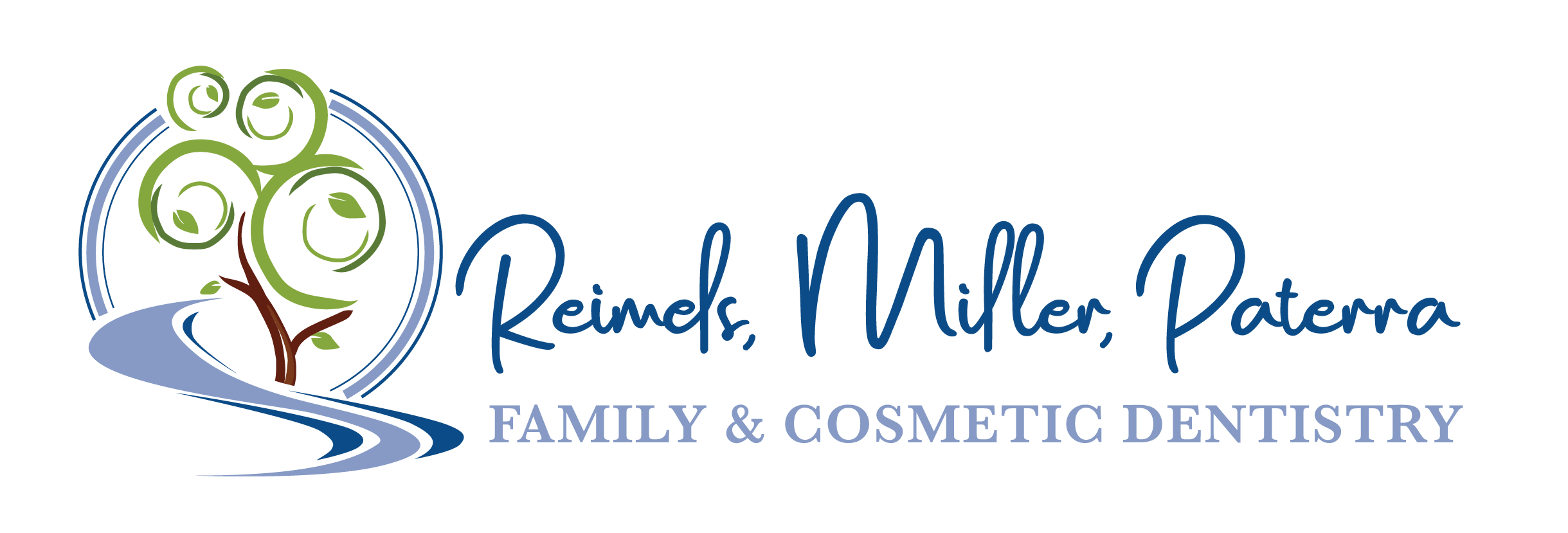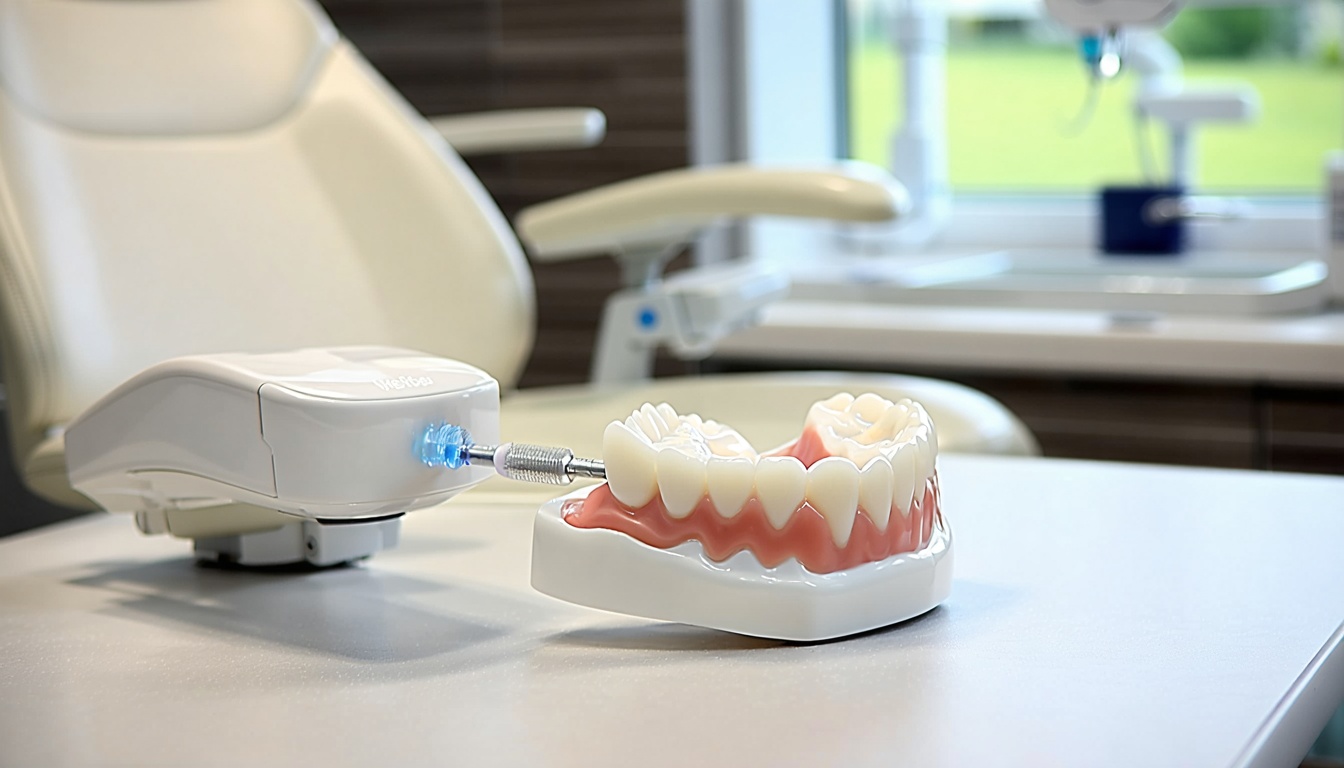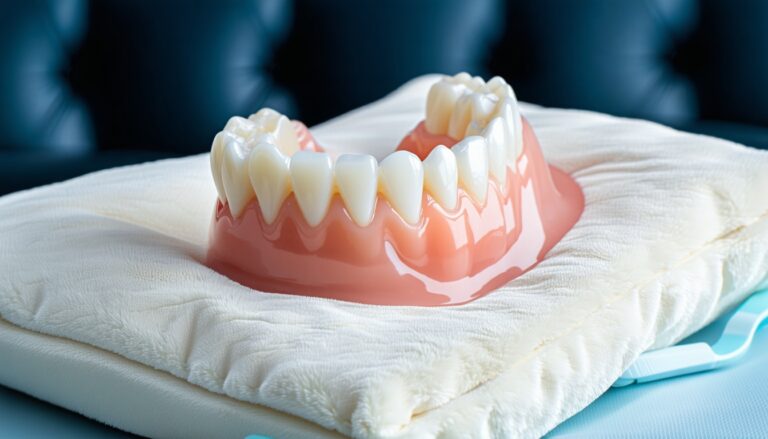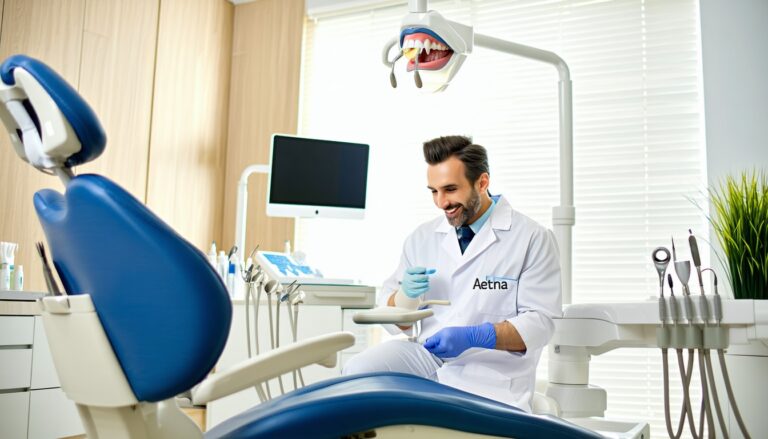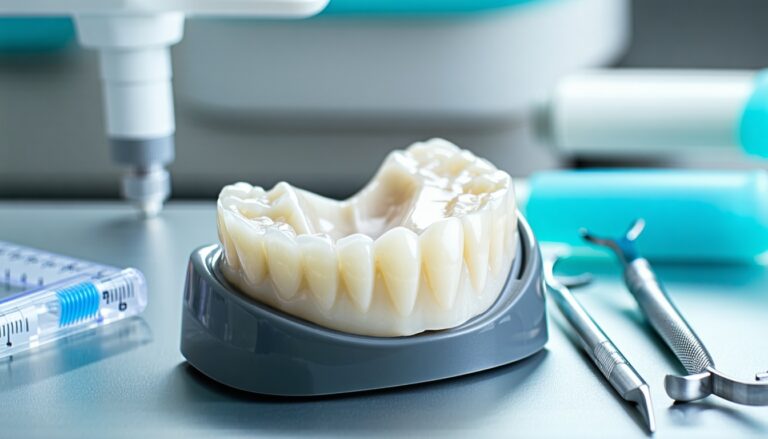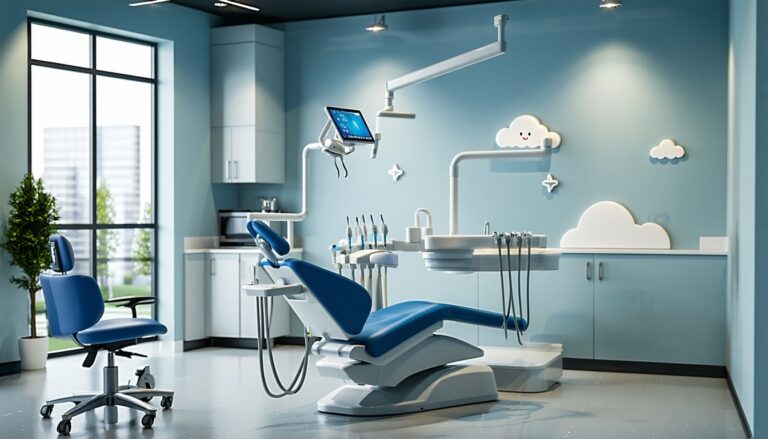Understanding Sleep Apnea Treatment
Non-CPAP Solutions
Sleep apnea is a common condition that can significantly impact your quality of sleep and overall health. While CPAP (Continuous Positive Airway Pressure) machines are often recommended for treating sleep apnea, not everyone finds them comfortable or convenient. This is where non-CPAP solutions like custom oral appliances come into play.
Oral appliances for sleep apnea work by pulling your jaw or tongue forward while sleeping to open the airway. This approach can be particularly beneficial for those who cannot use a CPAP machine (Cleveland Clinic). These devices are especially effective for individuals with mild to moderate obstructive sleep apnea (OSA).
For those with comprehensive dental insurance, such as MetLife, exploring dental appliances can be both a viable and cost-effective option. For more information on how insurance can cover these treatments, check our page on oral appliance therapy for sleep apnea with insurance.
Custom Oral Appliance Therapy
Custom oral appliance therapy is designed to provide a personalized solution to manage and treat sleep apnea. These devices are often more effective than over-the-counter options like “boil and bite” models because they are tailored to fit your unique dental structure (Cleveland Clinic).
| Aspect | Custom Oral Appliances | Over-the-counter Options |
|---|---|---|
| Fit | Custom fit to your mouth | One-size-fits-all |
| Comfort | High | Low to moderate |
| Effectiveness | High | Low |
| Cost | Higher | Lower |
Custom oral appliances come in two main types:
- Mandibular Advancement Devices (MADs): These devices work by holding your lower jaw in a forward position to prevent airway collapse.
- Tongue-Stabilizing Devices (TSDs): These appliances keep your tongue in a forward position.
Both types of devices are designed to create more space for airflow, reducing sleep apnea symptoms (Cleveland Clinic). If you’re considering custom oral appliances, it’s important to consult with a qualified dentist. For those with insurance like MetLife, coverage can make these treatments more accessible. Learn more about MetLife insurance TMJ specialists and see if your insurance covers the treatment you need.
Whether you’re dealing with snoring or more severe sleep apnea, oral appliance therapy offers a practical, comfortable solution to enhance your sleep quality. For specialized care in Huntersville, NC, ensuring you consult a trusted dental practice can make all the difference. Visit our page on custom sleep apnea mouthpieces with insurance to explore your options further.
Types of Dental Sleep Appliances
There are two primary types of dental sleep appliances designed to treat obstructive sleep apnea (OSA). These are Mandibular Advancement Devices (MADs) and Tongue-Stabilizing Devices (TSDs). Both types help in improving airflow by altering the positioning of the jaw or the tongue during sleep.
Mandibular Advancement Devices (MADs)
Mandibular Advancement Devices, commonly referred to as MADs, work by repositioning the lower jaw forward, thereby opening up the airway (Cleveland Clinic). These devices are custom-fit to each patient, ensuring comfort and effectiveness. They are often considered the most popular type of dental appliance for sleep apnea due to their ease of use, high effectiveness, and affordability compared to CPAP machines (Leix Dental).
| Feature | Mandibular Advancement Devices (MADs) |
|---|---|
| Mechanism | Repositions the lower jaw forward |
| Effectiveness | High for mild to moderate OSA |
| Comfort | Custom-fit for individual patients |
| Affordability | Generally more affordable than CPAP machines |
| Insurance Coverage | Often covered by dental insurance |
MADs are generally recommended for individuals diagnosed with mild to moderate sleep apnea. Those with severe sleep apnea might require an alternative treatment like a CPAP machine. For more on dental insurance coverage for these devices, see our section on insurance coverage for sleep apnea devices.
Tongue-Stabilizing Devices (TSDs)
Tongue-Stabilizing Devices, or TSDs, work by holding the tongue in a forward position, preventing it from blocking the airway during sleep. Unlike MADs, TSDs do not reposition the jaw, making them a suitable option for those who cannot tolerate mandibular advancement.
| Feature | Tongue-Stabilizing Devices (TSDs) |
|---|---|
| Mechanism | Stabilizes the tongue in a forward position |
| Effectiveness | Suitable for mild to moderate OSA |
| Comfort | May take time to adapt |
| Affordability | Generally affordable |
| Insurance Coverage | Often covered by dental insurance |
TSDs are beneficial for patients who experience discomfort with jaw repositioning or have dental conditions that make using MADs challenging. To know more about insurance coverage for TSDs, check out our article on dental insurance mouthguard for sleep apnea.
When considering a Metlife dental appliance for sleep apnea, both MADs and TSDs offer effective treatment options. Choosing the right type depends on individual comfort and specific medical conditions. Always consult with your sleep specialist or dentist to determine the most suitable option for your needs. For more on related treatments, explore our sections on tmj disorder treatment covered by aetna and tmd therapy with blue cross blue shield insurance.
Benefits of Custom Oral Appliances
Custom oral appliances offer a versatile and effective solution for individuals with obstructive sleep apnea (OSA). They are favored for their comfort, ease of use, and non-invasive nature. This section delves into their effectiveness and the criteria needed to consider oral appliance therapy.
Effectiveness in OSA Treatment
Custom-made oral appliances are particularly effective in treating OSA, especially when compared to over-the-counter options like “boil and bite” models. These devices are tailored to fit your mouth precisely, offering a high level of comfort and ensuring a proper fit.
- High Success Rate: Studies show that custom oral appliances are highly effective in reducing the symptoms of sleep apnea, including snoring and interrupted sleep patterns (White Flint Family Dental).
- Improved Sleep Quality: By keeping your airway open during sleep, these devices can significantly enhance sleep quality and overall health.
Criteria for Oral Appliance Therapy
To determine if you are a candidate for oral appliance therapy, several criteria must be met. Custom-made appliances are essential for achieving the best results, manufactured using high-quality dental materials, and designed to last an average of three years (White Flint Family Dental).
- OSA Diagnosis: A formal diagnosis of obstructive sleep apnea from a healthcare provider.
- Failed CPAP Therapy: If CPAP (Continuous Positive Airway Pressure) therapy has failed or is not a viable option, oral appliances become a recommended alternative.
- Insurance Criteria: Insurance coverage often requires meeting specific criteria. For example, oral devices are frequently covered for individuals with moderate OSA without additional prerequisites. For mild OSA, the presence of comorbidities like hypertension, heart disease, or mood disorders might be required. Severe cases are usually covered if CPAP therapy has proven ineffective.
| Insurance Coverage Criteria | OSA Severity Level | Additional Requirements |
|---|---|---|
| Mild | Comorbidities (e.g., hypertension, heart disease) | Yes |
| Moderate | Broadly covered | No |
| Severe | CPAP failure or inappropriateness | Yes |
Understand the benefits and criteria for oral appliance therapy. Explore further detailed insights on oral appliance therapy for sleep apnea with insurance.
Custom oral appliances offer an effective, convenient, and often more comfortable option for managing sleep apnea. They are especially beneficial for individuals looking for a non-invasive treatment method, ideally framed within the context of [premium full-service dentistry] in Huntersville, NC. Explore your options with a trusted provider and ensure comprehensive care for your OSA needs.
Insurance Coverage for Sleep Apnea Devices
Understanding insurance coverage is crucial when considering a MetLife dental appliance for sleep apnea. The type of coverage—medical or dental—plays a significant role in determining eligibility and reimbursement.
Medical vs. Dental Insurance Coverage
Most medical insurance plans provide coverage for dental appliance therapy as Durable Medical Equipment (DME) to treat obstructive sleep apnea (OSA), provided specific criteria are met (Daybreak). This includes insurers like Blue Cross Blue Shield and United Healthcare. On the other hand, dental insurance generally does not cover these devices even though they are provided by a dentist.
| Insurance Type | Coverage for Oral Appliances |
|---|---|
| Medical Insurance | Generally Covered (as DME) |
| Dental Insurance | Generally Not Covered |
For more information on specific insurance providers’ coverage, you can explore our guides on BCBS dentist for TMJ treatment and United Healthcare TMD treatment dentist.
Criteria for Coverage Eligibility
Insurance companies have set criteria that must be met for coverage eligibility of oral devices for OSA. These criteria vary depending on the severity of the sleep apnea and co-morbid conditions:
- Mild Sleep Apnea: Coverage is typically available if there is an associated co-morbidity such as heart disease, hypertension, history of stroke, mood disorders, or excessive daytime sleepiness.
- Moderate Sleep Apnea: Generally covered without additional requirements.
- Severe Sleep Apnea: Coverage is provided if CPAP therapy has failed or if the patient is not an appropriate candidate for CPAP therapy (Daybreak).
| Severity of OSA | Coverage Criteria |
|---|---|
| Mild | With co-morbid conditions |
| Moderate | Generally covered |
| Severe | If CPAP fails or is unsuitable |
For more detailed insurance-specific information, you can read about tmd therapy with blue cross blue shield insurance and metlife insurance tmj specialist.
Understanding these criteria can help you navigate the insurance landscape effectively and ensure you receive the necessary treatment for your sleep apnea through a custom oral appliance. Ensure you also consult with your provider to confirm the specifics related to your insurance plan.
Comparison with CPAP Machines
When exploring treatment options for sleep apnea, it’s essential to compare the effectiveness and comfort of CPAP machines and dental appliances, especially for those considering the use of a MetLife dental appliance for sleep apnea.
Effectiveness & Comfort
Effectiveness
Oral appliance therapy can significantly improve symptoms in individuals with obstructive sleep apnea (OSA), particularly in mild to moderate cases. A custom-made oral appliance gently moves the lower jaw forward to keep the airway open during sleep. However, CPAP machines are generally more effective for treating all severities of OSA, especially severe cases.
| Treatment Type | Effectiveness for Mild OSA | Effectiveness for Moderate OSA | Effectiveness for Severe OSA |
|---|---|---|---|
| CPAP Machine | High | High | High |
| Oral Appliance | High | Moderate | Low – Moderate |
Comfort
Comfort plays a crucial role in adherence to sleep apnea treatment. CPAP machines often cause issues such as dry mouth, skin irritations, and a feeling of claustrophobia (Block Dental). On the other hand, oral appliances are non-invasive, easier to use, and more portable, making them a preferred option for many.
| Factor | CPAP Machine | Oral Appliance |
|---|---|---|
| Ease of Use | Moderate | High |
| Portability | Low | High |
| Potential Discomfort | High | Low |
Personalized Treatment Selection
Treatment Customization
For affluent professionals and executives seeking advanced dental care, personalized treatment is paramount. CPAP machines can be adjusted to specific pressure settings based on individual needs, but the bulky equipment and maintenance can be cumbersome.
Oral appliances, like those covered by MetLife insurance, offer a custom fit tailored to your jaw structure, providing a comfortable and effective solution. Consulting with a licensed dentist who specializes in sleep apnea can help determine the most suitable approach.
Consultation and Insurance
It’s important to discuss your options with a sleep apnea dental specialist with BCBS or a tmd therapy with blue cross blue shield insurance to ensure you receive the best possible care. Most insurance plans cover treatment costs, emphasizing the importance of selecting a provider who accepts your coverage.
By understanding the differences in effectiveness and comfort between CPAP machines and dental appliances, you can make an informed decision that suits your lifestyle and health needs. For more detailed guidance, visit our section on oral appliance therapy for sleep apnea.
Potential Side Effects & Precautions
While custom dental appliances for sleep apnea, such as those covered by MetLife dental insurance, can effectively manage obstructive sleep apnea (OSA), it’s important to be aware of the potential side effects and take necessary precautions.
Dental Side Effects
Oral appliances for sleep apnea can lead to various dental side effects. Understanding these potential issues can help you address them early with your dentist.
- Drooling: Increased salivation is common when you start using an oral appliance.
- Temporomandibular Disorders (TMD): The appliance may impact the temporomandibular joint (TMJ), causing pain or discomfort in the jaw. Learn more about TMJ disorder treatments covered by Aetna.
- Tooth Pain: Some patients report experiencing tooth pain or sensitivity, particularly when the device is first used.
- Bite Changes: Over time, oral appliances can cause tooth movements, altering your bite. Research by Alan Lowe, DMD, PhD, and Fernanda Almeida, DDS, MSc, PhD at the University of British Columbia, has shown that these changes can progress with prolonged use (Sleep Doctor).
| Potential Dental Side Effect | Description |
|---|---|
| Drooling | Increased salivation during use |
| TMD | Jaw pain or discomfort |
| Tooth Pain | Sensitivity or aching |
| Bite Changes | Tooth movements altering bite |
Regular dental check-ups are crucial. Discuss any discomfort or changes with your provider. Learn more about dental insurance for oral appliance therapy.
Physical Symptoms & Adjustments
In addition to dental side effects, some physical symptoms may be experienced, which may require adjustments to your appliance or usage habits.
- Swollen Tongue: Initially, you may notice a swollen tongue shaped like the appliance.
- Ear Fullness/Ringing: Some patients report sensations of ear fullness or ringing.
- Morning Fatigue: Feeling tired in the morning may indicate improper positioning of the appliance.
- Aching Teeth: The appliance may cause aching at the base of the teeth due to the pressure applied by the device (Sleep Doctor).
| Physical Symptoms | Description |
|---|---|
| Swollen Tongue | Tongue shaped like the appliance |
| Ear Fullness/Ringing | Sensation of fullness or ringing |
| Morning Fatigue | Feeling tired due to improper positioning |
| Aching Teeth | Pain at the base of teeth |
Discuss these symptoms with your dentist to ensure your device fits well and adjustments are made if necessary. Check out our in-network TMJ splint therapy dentist for additional support.
It’s crucial to follow a tailored treatment plan that prioritizes your comfort and health. Our practice in Huntersville, NC, emphasizes comprehensive care, ensuring that your sleep apnea treatment not only improves your sleep but also maintains your dental wellness. Read more about BCBS-approved dental appliance for sleep apnea.
